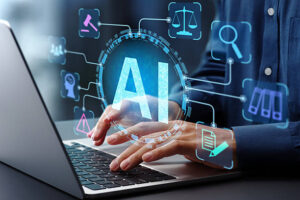Your cart is currently empty!
GENERATIVE AI:
Generative AI: Transforming the Future of Content Creation and Innovation
Generative AI is a rapidly evolving field within artificial intelligence that focuses on creating new content—text, images, music, code, and even video—based on patterns learned from existing data. Unlike traditional AI systems that analyze or classify data, generative AI builds new data that mimics the original inputs. This powerful capability is revolutionizing industries from entertainment and design to healthcare and education.
At the core of generative AI are advanced machine learning models, particularly Generative Adversarial Networks (GANs) and transformer-based models like OpenAI’s GPT (Generative Pre-trained Transformer). These models are trained on massive datasets, learning not just the information itself but the structure, tone, and nuance of how content is created. Once trained, these systems can generate human-like text, realistic images, or coherent pieces of music and speech.
One of the most visible impacts of generative AI is in content creation. Tools like ChatGPT, DALL·E, and others enable users to generate high-quality articles, artwork, and even videos in seconds. Writers use AI for drafting blog posts or brainstorming ideas, designers create concept art without starting from scratch, and marketers produce ad copy tailored to different audiences in real time. These tools significantly speed up workflows and lower barriers to creativity.
Generative AI also has major implications for software development. Code generation tools like GitHub Copilot help developers write code faster by suggesting lines, functions, or even entire modules. This not only improves productivity but can also reduce bugs and enhance collaboration among teams.
In healthcare, generative AI is being explored for creating synthetic medical data that protects patient privacy while still allowing for robust model training and research. It can also assist in drug discovery by simulating molecular structures or generating hypotheses based on medical literature.
Despite its promise, generative AI poses important challenges. The ability to generate realistic fake content—deepfakes, fake news, or fraudulent images—raises concerns around misinformation and trust. There are also ethical and legal questions regarding authorship, copyright, and data ownership. These challenges have prompted growing calls for responsible AI development, transparency, and regulation.
Another concern is bias in AI-generated content. If the training data contains societal biases, the AI can replicate or even amplify them. Developers and organizations must work to ensure fairness, inclusivity, and accountability in generative AI systems.
Looking ahead, generative AI is expected to play a central role in shaping the future of human-computer interaction. We are moving toward a world where AI can co-create with humans in real-time, assist in decision-making, and even offer personalized learning or therapy experiences. As the technology continues to mature, the emphasis will likely shift from mere generation to augmentation—where AI enhances rather than replaces human creativity and judgment.
In summary, generative AI is a groundbreaking innovation that opens up new possibilities across industries. With thoughtful development and ethical oversight, it has the potential to become one of the most transformative tools of the 21st century.

Leave a Reply